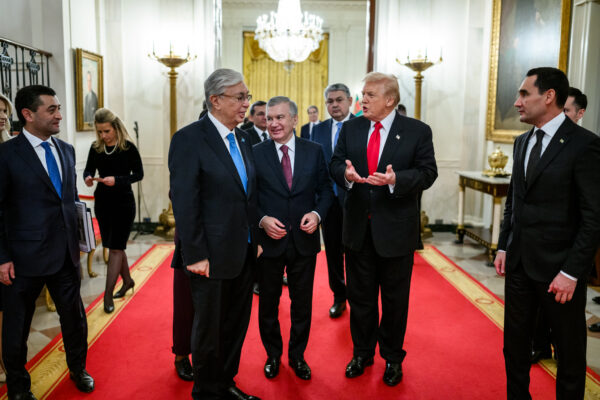The focus of the C5+1 has narrowed to the economic realm, yielding big deals and sidelining big challenges.
U.S. President Donald Trump speaks with Kazakh President Kassym-Jomart Tokayev and Uzbek President Shavkat Mirziyoyev, with Turkmen President Serdar Berdimuhamedov to the right, after a dinner in the East Room of the White House, Nov. 6, 2025.
Last week, economic cooperation took center stage as the five Central Asian presidents visited Washington, D.C., ostensibly to mark the 10th anniversary of C5+1. The week saw the transformation of the C5+1, from a vehicle for broad-based multilateral diplomacy to a format focused on the economic realm and tilted toward greater bilateral engagement for some countries in the region.
Nowhere is this more evident than the two joint statements – and five bilateral fact sheets – released on November 7 following the whirlwind week for Central Asia in Washington.
A Narrowed C5+1
The two joint statements focused on intentions in the fields of economic cooperation and cultural heritage.
The joint statement of intent on economic cooperation
Continue Reading on The Diplomat
This preview shows approximately 15% of the article. Read the full story on the publisher's website to support quality journalism.
